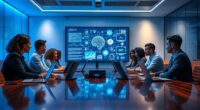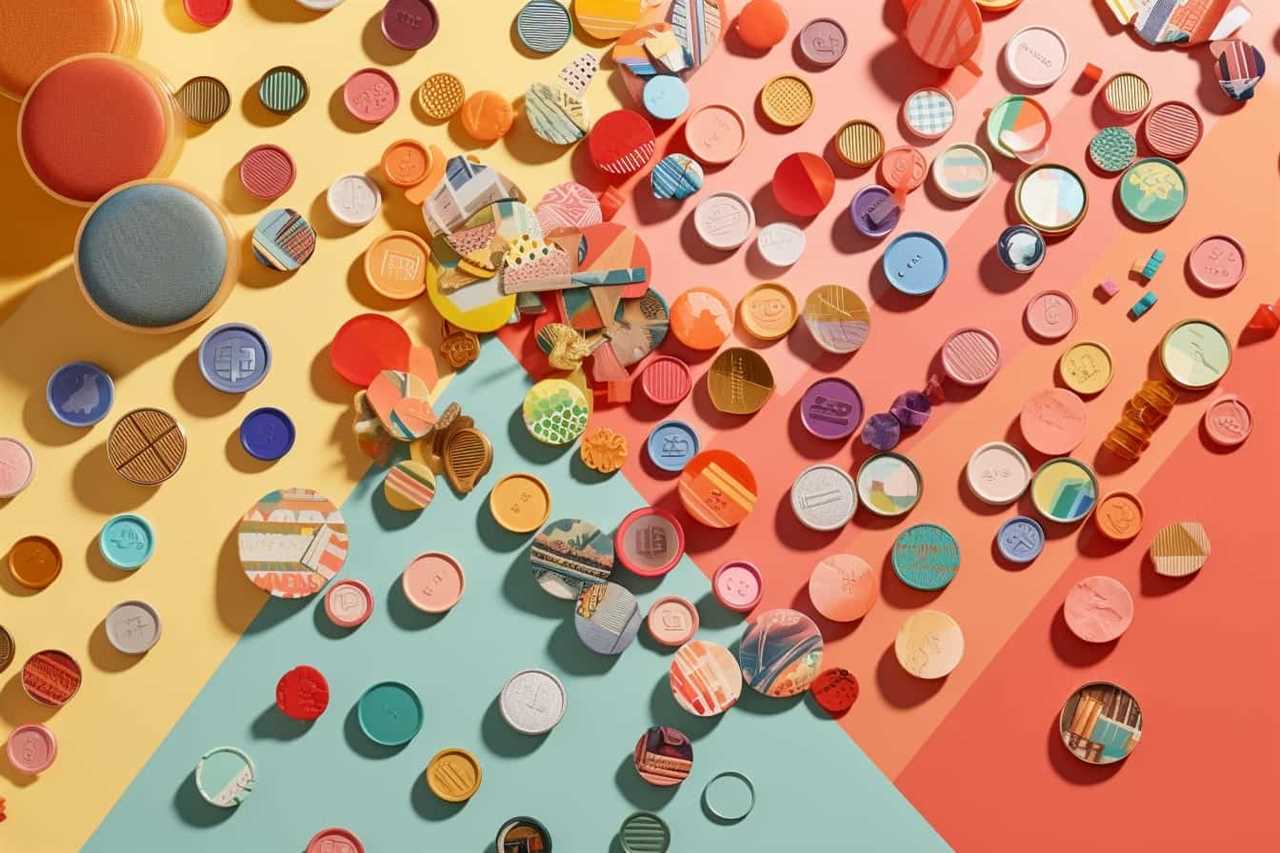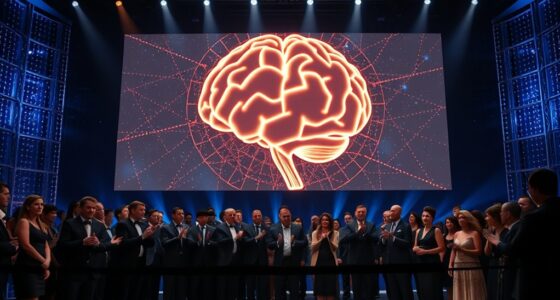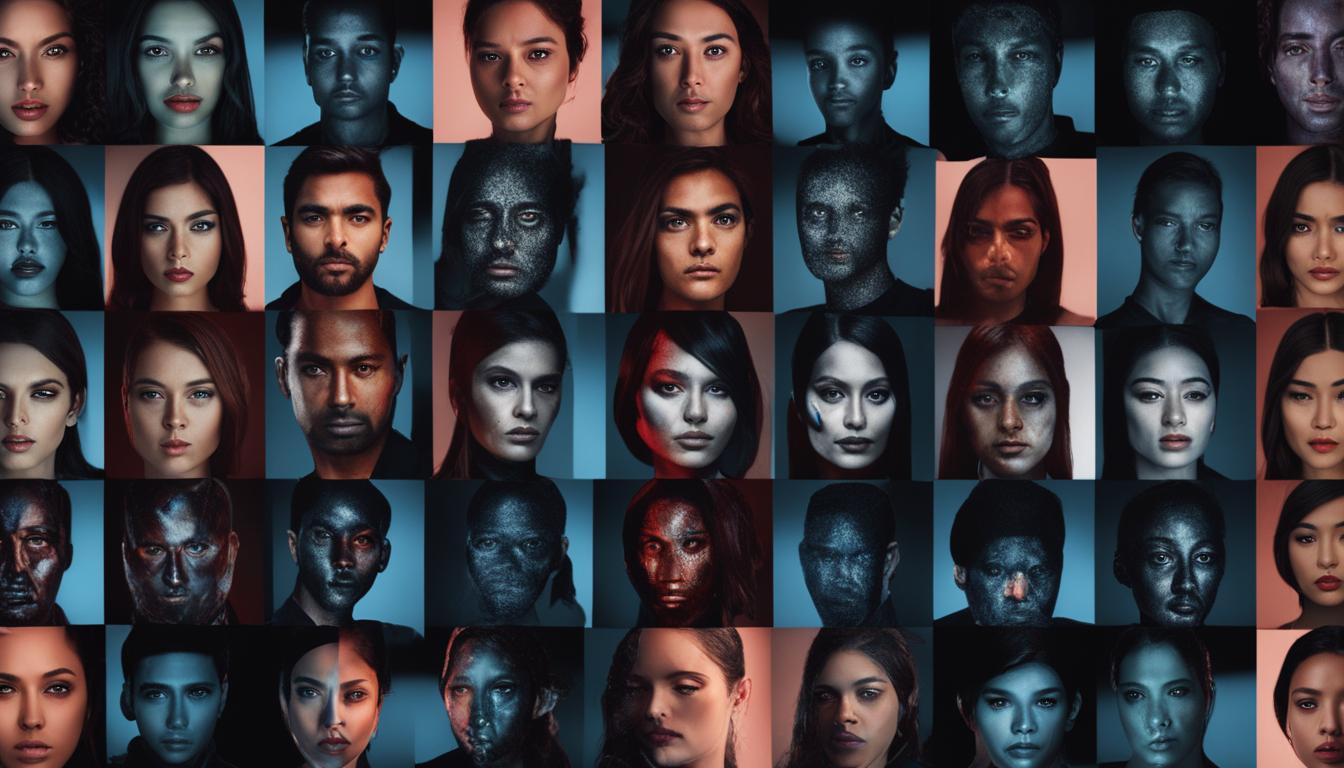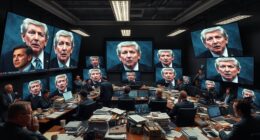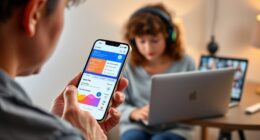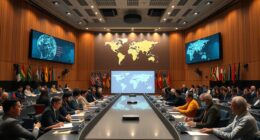When an AI-generated image wins a major art competition and leaves judges stunned, it sparks a debate about what truly defines creativity and authenticity. You might find yourself questioning whether AI can understand emotional depth or if the victory belongs to the programmer, user, or the machine itself. This controversy challenges traditional ideas of ownership and artistic value. Keep exploring to uncover how these moments are reshaping the future of art and creativity.
Key Takeaways
- An AI-generated artwork wins a major competition, highlighting AI’s growing mastery in creative fields.
- Judges are impressed by the technical skill, sparking debates on AI’s role in art recognition.
- The victory prompts questions about authorship, ownership, and authenticity of AI-created works.
- Critics and supporters debate whether AI can evoke genuine emotional depth or cultural significance.
- The event challenges traditional notions of creativity, prompting society to redefine art in the age of technology.
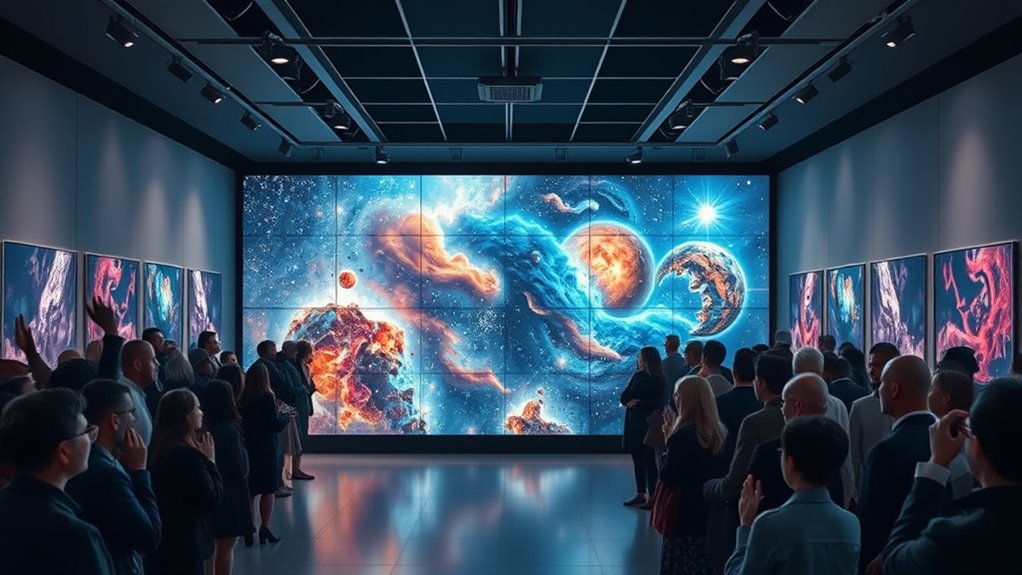
Have you ever wondered whether artificial intelligence can create truly compelling art? When an AI-generated image recently won a prominent art competition, it sparked a whirlwind of debate and curiosity. Judges were stunned, not just by the technical mastery of the piece, but also by what it signified for the future of art. This victory raises important questions about the ethical implications of AI in creative fields and whether such works can possess genuine creative authenticity.
As you consider this, you might find yourself pondering whether AI can truly understand the emotional depth or cultural significance behind art. Critics argue that relying on algorithms strips away the human element that has long defined artistic expression. They worry that AI-generated works might lack the intent, emotion, and personal perspective that make art resonate on a deeper level. Yet, supporters contend that AI can serve as a new creative tool, expanding what’s possible and offering fresh perspectives that challenge traditional notions of originality. This ongoing debate underscores the complex relationship between technology and human ingenuity.
The ethical implications become even more pronounced when you think about the role of creators and originality. If a machine produces a piece that wins a competition, who owns the creative rights? Is it the programmer, the user, or the AI itself? These questions push us to reevaluate concepts like authorship and authenticity. Some argue that the very act of programming or inputting prompts involves human creativity, so the work remains a reflection of human intent. Others worry that attributing artistic value to AI outputs diminishes the importance of human labor and emotional investment that traditionally define art.
Meanwhile, the question of creative authenticity hangs in the air. When you see an AI-created image, it’s natural to ask whether it can evoke the same emotional response as a painting crafted by a human artist. Can a machine truly capture the nuances of human experience? Or does the act of creating art require a conscious, emotional journey that only humans can undertake? The AI’s win in the competition challenges you to reconsider what constitutes genuine creativity. It forces you to confront whether a machine’s ability to produce visually stunning work qualifies as authentic art or merely a sophisticated imitation.
Ultimately, this controversy isn’t just about one winning image; it’s about how you define art itself in an age where technology blurs the lines between human and machine. As AI continues to evolve, so will your understanding of creativity, authenticity, and the ethical boundaries that shape artistic expression. Additionally, the integration of AI in art challenges traditional notions of artistic authenticity, prompting society to reconsider what it truly means to create and appreciate art.
Frequently Asked Questions
How Was the Ai-Generated Image Created?
You create the AI-generated image using a machine learning model trained on vast datasets of art and images. During the creative process, you input prompts or guidelines, and the AI analyzes patterns to generate unique visuals. This process combines your ideas with the model’s learned knowledge, resulting in a piece that blends human creativity with machine learning capabilities, producing an innovative and surprising artwork.
What Criteria Did Judges Use to Evaluate Entries?
You see, the judges focused on artistic originality and judging fairness when evaluating entries. They looked for innovative concepts, unique styles, and how well each piece expressed creativity. Fairness mattered too, so they considered the technical skill and emotional impact without bias. By balancing these criteria, they aimed to select works that truly stood out for their originality and artistic merit.
Will AI Art Be Allowed in Future Competitions?
Will AI art be allowed in future competitions? The art community is divided, but many believe that embracing AI can enhance creative authenticity rather than diminish it. As technology evolves, competitions may set new rules to distinguish human-made art from AI-generated pieces. You should stay tuned, because the landscape of art is shifting—what’s accepted today might be challenged tomorrow, making it essential to adapt and redefine creative boundaries.
How Do Artists Feel About AI Winning?
You might feel a mix of emotions when AI wins, ranging from pride to frustration. Your emotional response could stem from concerns about artistic authenticity, questioning if AI-created work truly represents human creativity. You may also wonder if this challenges traditional art values, sparking debates about what defines art. Ultimately, it prompts you to reflect on how technology influences artistic expression and whether it enriches or diminishes genuine human talent.
What Implications Does This Have for Traditional Art?
You might see this shift as challenging artistic authenticity and creative integrity, raising questions about what truly defines art. It pushes traditional artists to reconsider their craft, inspiring innovation but also sparking debates about originality. While AI can enhance creativity, it also risks undermining the value of human expression. Ultimately, this development urges you to reflect on how technology influences artistic standards and the essence of genuine artistry.
Conclusion
This shocking victory proves that AI art has become unstoppable, conquering human creativity in a way you never thought possible. It’s as if machines have taken over the art world overnight, leaving artists scrambling to catch up. The judges’ surprise shows just how mind-blowingly advanced AI has become—maybe even more talented than humans themselves. Get ready, because this is only the beginning of a future where machines dominate the canvas, and human art is left in the dust!


